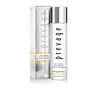Elizabeth Arden PREVAGE® Anti-Aging Antioxidant Infusion Essence Versus Minimalist Vitamin B5 10% Moisturizer
What's inside
What's inside
 Key Ingredients
Key Ingredients

 Benefits
Benefits

 Concerns
Concerns

No concerns
 Ingredients Side-by-side
Ingredients Side-by-side

Water
Skin ConditioningSaccharomyces Ferment Filtrate
HumectantButylene Glycol
HumectantGlycerin
HumectantPEG-8 Dimethicone
EmulsifyingAlcohol
AntimicrobialAlcohol Denat.
AntimicrobialC12-15 Alkyl Benzoate
AntimicrobialCamellia Sinensis Leaf Extract
AntimicrobialCaprylyl Glycol
EmollientCarnosine
Skin ConditioningCeratonia Siliqua Seed Extract
Skin ConditioningCetyl Palmitate
EmollientCholesterol
EmollientCitric Acid
BufferingDipropylene Glycol
HumectantErgothioneine
AntioxidantFerulic Acid
AntimicrobialHexylene Glycol
EmulsifyingHydrogenated Phosphatidylcholine
EmulsifyingHydroxydecyl Ubiquinone
AntioxidantMagnesium Ascorbyl Phosphate
AntioxidantParfum
MaskingPEG-100 Stearate
Pentylene Glycol
Skin ConditioningPolysorbate 20
EmulsifyingResveratrol
AntioxidantSodium Hyaluronate
HumectantSodium Laureth Sulfate
CleansingSodium PCA
HumectantXanthan Gum
EmulsifyingChlorphenesin
AntimicrobialPhenoxyethanol
PreservativeSodium Benzoate
MaskingWater, Saccharomyces Ferment Filtrate, Butylene Glycol, Glycerin, PEG-8 Dimethicone, Alcohol, Alcohol Denat., C12-15 Alkyl Benzoate, Camellia Sinensis Leaf Extract, Caprylyl Glycol, Carnosine, Ceratonia Siliqua Seed Extract, Cetyl Palmitate, Cholesterol, Citric Acid, Dipropylene Glycol, Ergothioneine, Ferulic Acid, Hexylene Glycol, Hydrogenated Phosphatidylcholine, Hydroxydecyl Ubiquinone, Magnesium Ascorbyl Phosphate, Parfum, PEG-100 Stearate, Pentylene Glycol, Polysorbate 20, Resveratrol, Sodium Hyaluronate, Sodium Laureth Sulfate, Sodium PCA, Xanthan Gum, Chlorphenesin, Phenoxyethanol, Sodium Benzoate
Water
Skin ConditioningCyclopentasiloxane
EmollientPanthenol
Skin ConditioningPEG/PPG-18/18 Dimethicone
EmulsifyingGlycerin
HumectantHydrogenated Polyisobutene
EmollientBetaine
HumectantSodium Hyaluronate
HumectantAllantoin
Skin ConditioningCopper Gluconate
Skin ConditioningDimethicone Crosspolymer
Emulsion StabilisingXylitylglucoside
HumectantAnhydroxylitol
HumectantXylitol
HumectantMagnesium Aspartate
Skin ConditioningZinc Gluconate
Skin ConditioningPentylene Glycol
Skin ConditioningMagnesium Sulfate
Phenoxyethanol
PreservativeHydroxyethyl Acrylate/Sodium Acryloyldimethyl Taurate Copolymer
Emulsion StabilisingCarbomer
Emulsion StabilisingEthylhexylglycerin
Skin ConditioningWater, Cyclopentasiloxane, Panthenol, PEG/PPG-18/18 Dimethicone, Glycerin, Hydrogenated Polyisobutene, Betaine, Sodium Hyaluronate, Allantoin, Copper Gluconate, Dimethicone Crosspolymer, Xylitylglucoside, Anhydroxylitol, Xylitol, Magnesium Aspartate, Zinc Gluconate, Pentylene Glycol, Magnesium Sulfate, Phenoxyethanol, Hydroxyethyl Acrylate/Sodium Acryloyldimethyl Taurate Copolymer, Carbomer, Ethylhexylglycerin
 Reviews
Reviews

Ingredients Explained
These ingredients are found in both products.
Ingredients higher up in an ingredient list are typically present in a larger amount.
Glycerin is already naturally found in your skin. It helps moisturize and protect your skin.
A study from 2016 found glycerin to be more effective as a humectant than AHAs and hyaluronic acid.
As a humectant, it helps the skin stay hydrated by pulling moisture to your skin. The low molecular weight of glycerin allows it to pull moisture into the deeper layers of your skin.
Hydrated skin improves your skin barrier; Your skin barrier helps protect against irritants and bacteria.
Glycerin has also been found to have antimicrobial and antiviral properties. Due to these properties, glycerin is often used in wound and burn treatments.
In cosmetics, glycerin is usually derived from plants such as soybean or palm. However, it can also be sourced from animals, such as tallow or animal fat.
This ingredient is organic, colorless, odorless, and non-toxic.
Glycerin is the name for this ingredient in American English. British English uses Glycerol/Glycerine.
Learn more about GlycerinPentylene glycol is typically used within a product to thicken it. It also adds a smooth, soft, and moisturizing feel to the product. It is naturally found in plants such as sugar beets.
The hydrophilic trait of Pentylene Glycol makes it a humectant. As a humectant, Pentylene Glycol helps draw moisture from the air to your skin. This can help keep your skin hydrated.
This property also makes Pentylene Glycol a great texture enhancer. It can also help thicken or stabilize a product.
Pentylene Glycol also acts as a mild preservative and helps to keep a product microbe-free.
Some people may experience mild eye and skin irritation from Pentylene Glycol. We always recommend speaking with a professional about using this ingredient in your routine.
Pentylene Glycol has a low molecular weight and is part of the 1,2-glycol family.
Learn more about Pentylene GlycolPhenoxyethanol is a preservative that has germicide, antimicrobial, and aromatic properties. Studies show that phenoxyethanol can prevent microbial growth. By itself, it has a scent that is similar to that of a rose.
It's often used in formulations along with Caprylyl Glycol to preserve the shelf life of products.
Sodium Hyaluronate is hyaluronic acid's salt form. It is commonly derived from the sodium salt of hyaluronic acid.
Like hyaluronic acid, it is great at holding water and acts as a humectant. This makes it a great skin hydrating ingredient.
Sodium Hyaluronate is naturally occurring in our bodies and is mostly found in eye fluid and joints.
These are some other common types of Hyaluronic Acid:
Learn more about Sodium HyaluronateWater. It's the most common cosmetic ingredient of all. You'll usually see it at the top of ingredient lists, meaning that it makes up the largest part of the product.
So why is it so popular? Water most often acts as a solvent - this means that it helps dissolve other ingredients into the formulation.
You'll also recognize water as that liquid we all need to stay alive. If you see this, drink a glass of water. Stay hydrated!
Learn more about Water